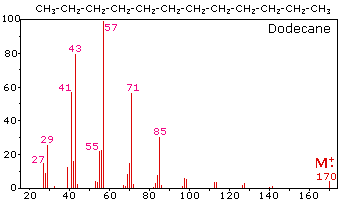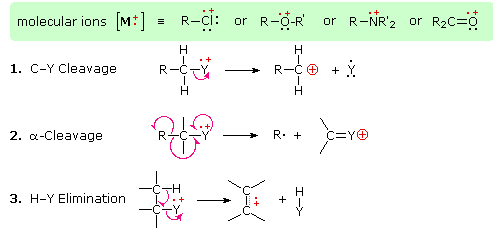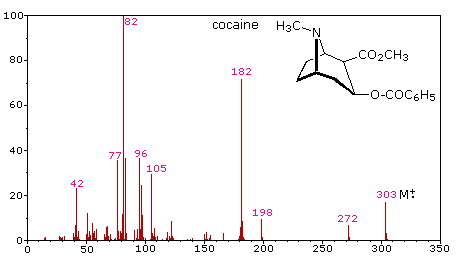trans-3-hydroxy- cyclobutanecarboxylic acid methyl ester
Example 47
Preparation of amines (for Example 16 and 43) and alcohols (for Example 7 and 9)
Example 47-1 : 4-Hydroxy-2,2-dimethylbutyric acid ethyl ester
A mixture of dιhydro-3,3-dιmethyl-2(3/-/)-furanone (10 mmol, 1 14 g), aqueous 1 M KOH solution (10 mmol) and one drop of phenolphthalem indicator (0 5% w/v in EtOH/water (1 1)) is stirred at 105 0C for 3 5 hours The mixture is cooled to ambient temperature and concentration under reduced pressure To the residue is added 10 ml_ of EtOH To the solution is added 50 ml of Et2O and the solid isolated by filtration and dried under 100 mbar at 50 0C to give potassium 4-hydroxy-2,2-dιmethylbutyrate (1 21 g, 71 %) 1H NMR (400 MHz, c/5 DMSO) δ ppm 0 96 (s, 6 H), 1 47 (t, J = 5 54 Hz, 2 H), 3 43 (t, J = 5 54 Hz, 2 H)
To a solution of potassium 4-hydroxy-2,2-dιmethylbutyrate (1 92 mmol, 327 mg) in DMF (6 ml_) is added ethyl iodide (2 30 mmol, 359 mg) The reaction mixture is stirred for 2 hours, and quenched with saturated ammonium chloride solution The product is extracted three times with EtOAc The combined organic layer is washed with aqueous 0 1 M HCI then brine, dried over Na2SO4, filtered, concentrated under reduced pressure to give 4-Hydroxy-2,2- dimethylbutyπc acid ethyl ester (520 mg) contaminated with DMF
1H NMR (400 MHz, CHLOROFORM-d) δ ppm 1 22 (s, 6 H) 1 26 (t, J = 7 06 Hz, 3 H) 1 82- 1 85 (m, 2 H) 1 91 (brs, 1 H) 3 69 (t, J = 6 55 Hz, 2 H) 4 13 (q, J = 7 06 Hz, 2 H) Example 47-2: fraπs-3-hydroxy-cyclobutanecarboxylic acid methyl ester
To a solution of cis-trans mixture of 3-hydroxy-cyclobutanecarboxylic acid methyl ester (1 .30 g, 10 mmol) in DMF 13 mL is added NaH (50% in oil, 720 mg, 15 mmol) at 0 0C. After stirring at 0 0C for 15 minutes, benzyl bromide (1.43 ml, 12 mmol) is added at 0 0C. The mixture is stirred at room temperature for 2 hours and quenched with H2O. The solution is extracted with EtOAc. The organic layer is washed with H2O and brine, dried over MgSO4 and concentrated under reduced pressure. The residue is purified by silica gel column chromatography (eluent; hexane / EtOAc) to give trans-3-benzyloxy-cyclobutanecarboxylic acid methyl ester (340 mg, 15.4%). TLC (hexane/EtOAc, 5:1 ) Rf 0.40. 1 H NMR (400 MHz, chloroform-d) δ ppm 2.26-2.34 (m, 2H), 2.48-2.52 (m, 2H), 3.02-3.06 (m, 1 H), 3.69 (s, 3H), 4.26-4.33 (m, 1 H), 4.42 (s, 2H)1 7.27-7.35 (m, 5H).
A solution of frans-3-benzyloxy-cyclobutanecarboxylic acid methyl ester (680 mg, 3.09 mmol) as 0.05 M solution in MeOH is pumped through the H-Cube™ flow hydrogenator fitted with a 10 mol% Pd/C catalyst cartridge heated to 40 0C at 10 bar. The flow rate is set at 1 ml/min. The solvent is removed under reduced pressure to give trans-3-hydroxy- cyclobutanecarboxylic acid methyl ester (380 mg, 94.5%); TLC (hexane/EtOAc, 1 :1 ) Rf 0.38. 1 H NMR (400 MHz, chloroform-d) δ ppm 2.18-2.25 (m, 2H), 2.55-2.61 (m, 2H), 3.01-3.08 (m, 1 H), 3.70 (s, 3H)1 4.53-4.61 (m, 1 H).
http://www.google.com/patents/WO2009071509A1?cl=en
 DRUG APPROVALS BY DR ANTHONY MELVIN CRASTO …..FOR BLOG HOME CLICK HERE
DRUG APPROVALS BY DR ANTHONY MELVIN CRASTO …..FOR BLOG HOME CLICK HERE
 LIONEL MY SON
LIONEL MY SON

Example 47
Preparation of amines (for Example 16 and 43) and alcohols (for Example 7 and 9)
Example 47-1 : 4-Hydroxy-2,2-dimethylbutyric acid ethyl ester
A mixture of dιhydro-3,3-dιmethyl-2(3/-/)-furanone (10 mmol, 1 14 g), aqueous 1 M KOH solution (10 mmol) and one drop of phenolphthalem indicator (0 5% w/v in EtOH/water (1 1)) is stirred at 105 0C for 3 5 hours The mixture is cooled to ambient temperature and concentration under reduced pressure To the residue is added 10 ml_ of EtOH To the solution is added 50 ml of Et2O and the solid isolated by filtration and dried under 100 mbar at 50 0C to give potassium 4-hydroxy-2,2-dιmethylbutyrate (1 21 g, 71 %) 1H NMR (400 MHz, c/5 DMSO) δ ppm 0 96 (s, 6 H), 1 47 (t, J = 5 54 Hz, 2 H), 3 43 (t, J = 5 54 Hz, 2 H)
To a solution of potassium 4-hydroxy-2,2-dιmethylbutyrate (1 92 mmol, 327 mg) in DMF (6 ml_) is added ethyl iodide (2 30 mmol, 359 mg) The reaction mixture is stirred for 2 hours, and quenched with saturated ammonium chloride solution The product is extracted three times with EtOAc The combined organic layer is washed with aqueous 0 1 M HCI then brine, dried over Na2SO4, filtered, concentrated under reduced pressure to give 4-Hydroxy-2,2- dimethylbutyπc acid ethyl ester (520 mg) contaminated with DMF
1H NMR (400 MHz, CHLOROFORM-d) δ ppm 1 22 (s, 6 H) 1 26 (t, J = 7 06 Hz, 3 H) 1 82- 1 85 (m, 2 H) 1 91 (brs, 1 H) 3 69 (t, J = 6 55 Hz, 2 H) 4 13 (q, J = 7 06 Hz, 2 H) Example 47-2: fraπs-3-hydroxy-cyclobutanecarboxylic acid methyl ester
To a solution of cis-trans mixture of 3-hydroxy-cyclobutanecarboxylic acid methyl ester (1 .30 g, 10 mmol) in DMF 13 mL is added NaH (50% in oil, 720 mg, 15 mmol) at 0 0C. After stirring at 0 0C for 15 minutes, benzyl bromide (1.43 ml, 12 mmol) is added at 0 0C. The mixture is stirred at room temperature for 2 hours and quenched with H2O. The solution is extracted with EtOAc. The organic layer is washed with H2O and brine, dried over MgSO4 and concentrated under reduced pressure. The residue is purified by silica gel column chromatography (eluent; hexane / EtOAc) to give trans-3-benzyloxy-cyclobutanecarboxylic acid methyl ester (340 mg, 15.4%). TLC (hexane/EtOAc, 5:1 ) Rf 0.40. 1 H NMR (400 MHz, chloroform-d) δ ppm 2.26-2.34 (m, 2H), 2.48-2.52 (m, 2H), 3.02-3.06 (m, 1 H), 3.69 (s, 3H), 4.26-4.33 (m, 1 H), 4.42 (s, 2H)1 7.27-7.35 (m, 5H).
A solution of frans-3-benzyloxy-cyclobutanecarboxylic acid methyl ester (680 mg, 3.09 mmol) as 0.05 M solution in MeOH is pumped through the H-Cube™ flow hydrogenator fitted with a 10 mol% Pd/C catalyst cartridge heated to 40 0C at 10 bar. The flow rate is set at 1 ml/min. The solvent is removed under reduced pressure to give trans-3-hydroxy- cyclobutanecarboxylic acid methyl ester (380 mg, 94.5%); TLC (hexane/EtOAc, 1 :1 ) Rf 0.38. 1 H NMR (400 MHz, chloroform-d) δ ppm 2.18-2.25 (m, 2H), 2.55-2.61 (m, 2H), 3.01-3.08 (m, 1 H), 3.70 (s, 3H)1 4.53-4.61 (m, 1 H).
http://www.google.com/patents/WO2009071509A1?cl=en
Join me on google plus  Googleplus
Googleplus
 amcrasto@gmail.com
amcrasto@gmail.com
 LIONEL MY SON
LIONEL MY SON
He was only in first standard in school when I was hit by a deadly one in a million spine stroke called acute transverse mylitis, it made me 90% paralysed and bound to a wheel chair, Now I keep him as my source of inspiration and helping millions, thanks to millions of my readers who keep me going and help me to keep my son happy
















